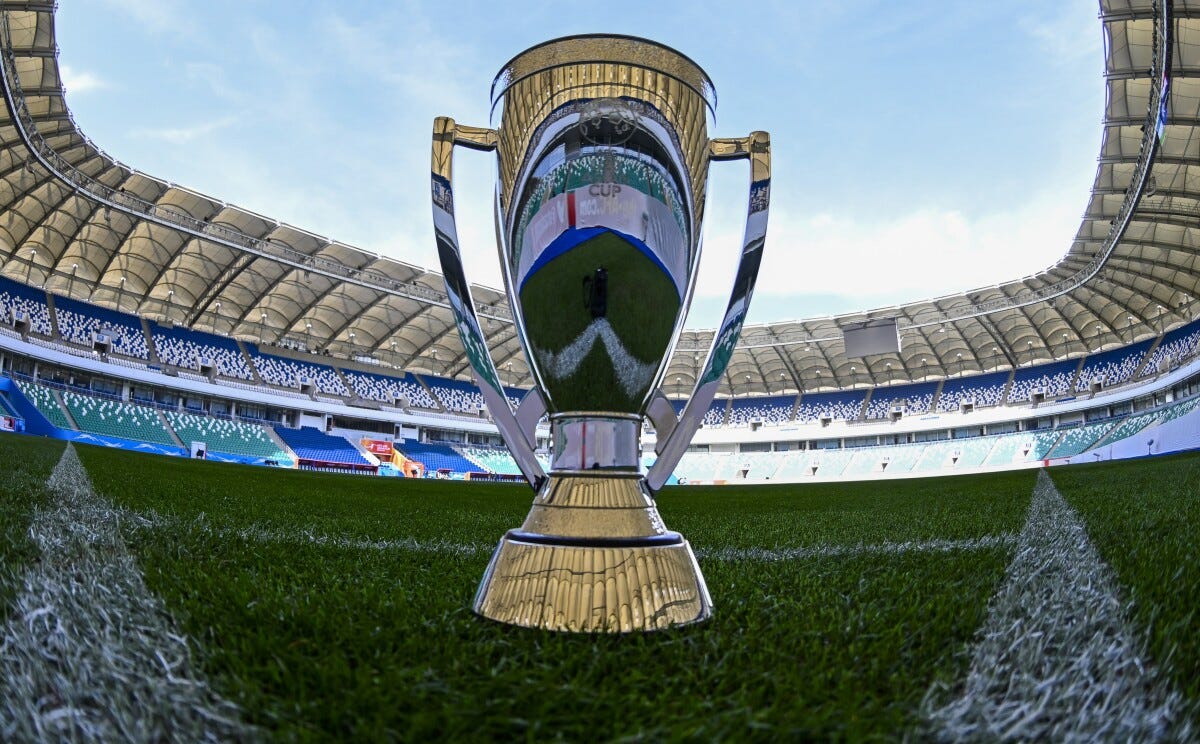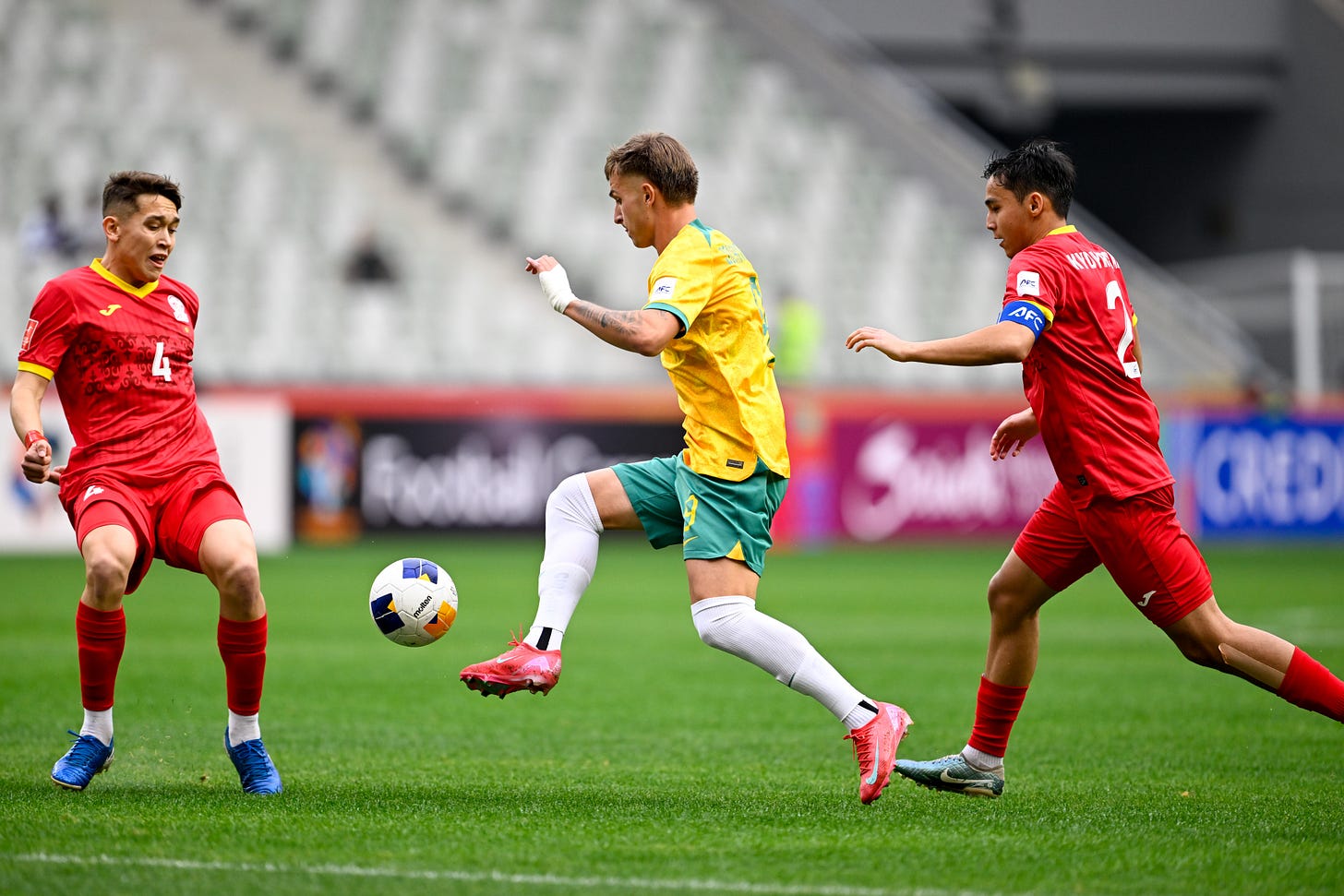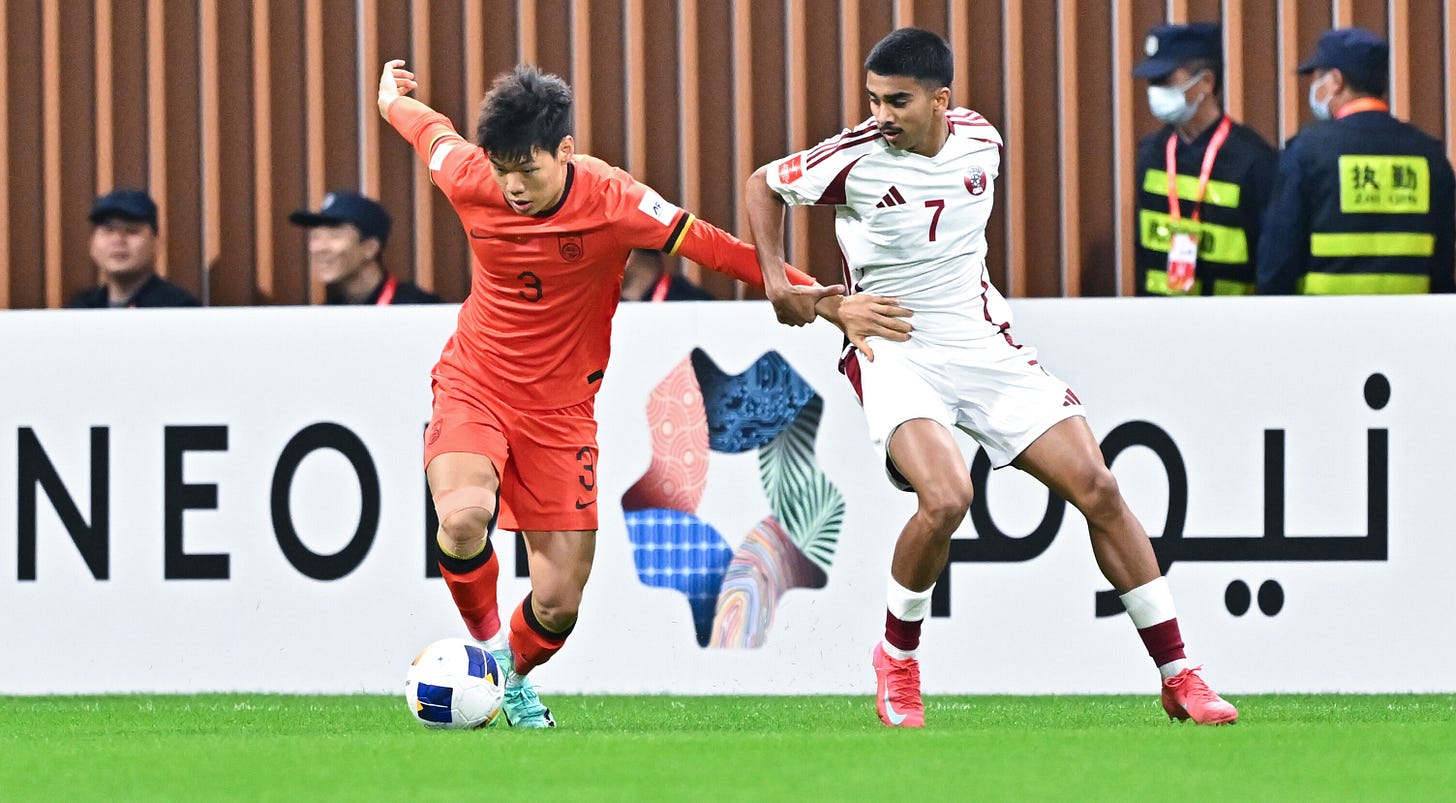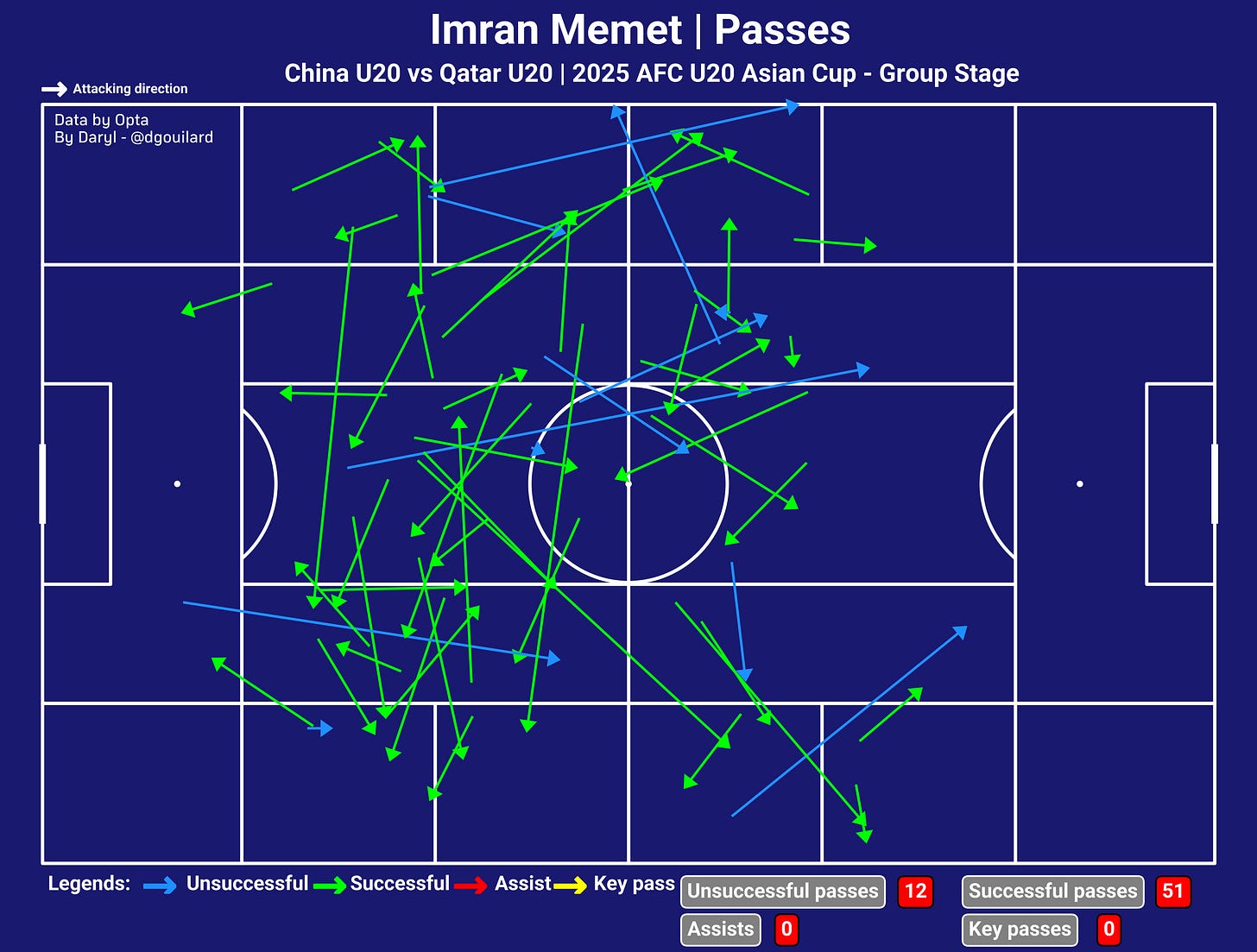Daryl's Notebook: Scouting the U20 Asian Cup (Day 1)
Potentially the place for the best Asian youngsters to showcase their talent, so I have to be there (virtually) to scout them!
I actually forgot about the U20 Asian Cup until I noticed that Australia’s broadcaster, Channel 10, are showing the opening match of the tournament, while watching Sydney FC played Bangkok United in the AFC Champions League Two! Anyway…the U20 Asian Cup is potentially where some of the best talents that Asia can offer are showcasing their talents. Plenty of raw, promising youngsters have been called up and will compete for the trophy and one of the four spots to play at the U20 World Cup later in the year.
Because of the nature of the competition, it is a good place to scout and find some talents that we might not have heard of now, but will be in the next few years. And that is the reason for the next few editions of the Notebook! While not to the extreme of the ASEAN Cup coverage that I did at the start of the year, I will be watching as many matches as possible to scout for youngsters who I might not have heard of. There will also be some tactical analysis here and there, but the main goal for these editions of the Notebook is to unearth some young talents to keep track of for the next few years.
Let’s not waste our time and get into the opening matches!
Australia 5-1 Kyrgyzstan
There was definitely a difference in quality between Australia and Kyrgyzstan, which was shown clearly whenever the Joeys built up. Even under Kyrgyzstan’s immense pressure, the defenders still played out very calmly and goalkeeper (#1) Steven Hall used long passes to bypass the press and got the ball forward to the strikers.
Australia’s opening goal was scored by Adelaide United’s striker (#9) Luka Jovanović and he just showed his quality through the way that he brought the ball under controlled then calmly got passed Kyrgyzstan’s defenders. He had just been brilliant up front and potentially be the player of the match after 30 minutes or so, and while I am aware of his quality at Adelaide this season, he still surprised me with his performance so far.
His strike partner (#19) Musa Toure had also been brilliant, holding off the opposition to control the ball, very quick to get to the end of through balls, and his finishing had brought him two goals after 40 minutes.
I was also impressed with defensive midfielder (#6) Paul Okon-Engstler who seemed to play a crucial role in how Australia built up from deep. He sat right in front of the centre-back duo, found pocket of spaces where he could receive the ball and dictate the play. What impressed me, though, was the fact that he consistently turned to look forward and find progressive passing options, which allowed Australia to go forward quicker and more often.
(Full match is from the AFC’s Youtube channel)
On Kyrgyzstan’s side, (#23) Beknaz Almazbekov, (#9) Argen Emilbekov, and (#10) Umar Madaminov were three names that impressed me in the first half. Almazbekov is a familiar name having played very often in the national team, and on the few occasions that he had the ball, he showed his creativity to create chances for his teammates. Meanwhile, Emilbekov and Madaminov were two players who consistently got to the end of chances, showed up and caused a bit of threat towards Australia’s goal.
Amidst Australia’s dominance throughout the match, Kyrgyzstan seemed to have found a way to attack the opposition through counter-attacks. Because Australia defended in a 4-1-3-2 formation and still looked to counter press after losing possession, they left a lot of spaces in behind their midfielders if they could not regroup in time and put the backline under a lot of pressure. Kyrgyzstan have used this to create a few chances, but they were not dangerous enough to force Australia to concede a goal.
As time went on, Australia slowed down as players got more tired. It…might have exposed that problem that Australia had even more with Kyrgyzstan created more chances in the later stage of the second half. Still, with most of Kyrgyzstan’s chances did not threaten Australia too much besides Almazbekov’s penalty, the Joeys were still in control of the match.
Some standout players from the match:
Australia U20: (#6) Paul Okon-Engstler, (#9) Luka Jovanović, (#19) Musa Toure
Kyrgyzstan U20: (#23) Beknaz Almazbekov
China vs Qatar
Very strong emphasis on playing down the wings during the early minutes from the host, especially down the right-hand side. Lots of China’s attacks went through their full-backs as they looked for their wingers to make runs in behind Qatar’s backline. Also utilised runs into the channels to get in behind, which did work on a few occasions but still had not yielded any noticeable chances after the first 10 minutes of the match.
With Qatar was still taking a bit of time to get used to the match, China was getting more confident to play through the middle and utilised their midfield duo of (#6) Imran Memet and (#8) Chen Zeshi. The host looked to slow their build up down and used Memet and Zeshi to dictate the tempo while the wide players looked to set themselves up to receive the ball. China then used the fact that Qatar defended in a 4-4-2 mid-block that looked to overload one side of the pitch, which allowed them to switch the play and then sped up their attack.
The host also looked towards their lone striker (#9) Liu Chengyu up top as a signal to create a fast break. As mentioned, Liu tended to look for runs in behind Qatar’s backline along with the wingers. Because Qatar did not put too much pressure on China’s centre-back duo and the midfielder who dropped deep, they had plenty of space and time to send a good long pass in behind and found Liu who already made the run.
Qatar’s pressing and defence had been a let down for me in the first half. They just did not put enough pressure on China’s build up and gave them plenty of time to execute the plan that the host wanted, which was playing around the mid-block and long passes over the top of the backline. They also left a lot of gaps in between the channels as well, the gaps that the Chinese wingers exploited multiple times throughout the first half.
Their attempts at attacking were not too impressive either. While also showing wing-reliant tendencies, Qatar lacked the final ball inside the final third to string together a proper attack that could threaten China’s goal. Seemed like they were relying more on individual efforts to get into the box, which did not help that much considering China defended well.
Into the second half and Qatar seemed to have found a way to get back into the match. While they still pretty much relied on individual efforts, they were looking to exploit the right-hand side more often. Because China now looked to commit plenty of players forward to attack, that left their backline vulnerable to counter attacks, which Qatar had been using quite well and got a goal back from that. But overall, China was still in control after 30 minutes of the second half, the host just seemed more tamed with the chances that they created.
The match had now turned into a back-and-forth competition between both teams, but again, the chances that they created seemed to be very hurry and did not have enough threat to actually get either teams closer to another goal.
Some standout players from the match:
China U20: (#6) Imran Memet, (#7) Mao Weijie, (#10) Kuai Jiwen, (#9) Liu Chengyu
Qatar U20: (#7) Tahshin Jamshid, (#9) Mohamed Gouda
A good opening day so far from the U20 Asian Cup with plenty of goals delivered. Australia showed their quality by dominating Kyrgyzstan in the opening match, while China edged a slightly underperformed Qatar in the second match of the first day. A few names have also stood out as well, including a few names that have been lighting up the Australian A-League. With that, it is a small, simple coverage for the first day, as I will be returning tomorrow with two more matches from group C!






